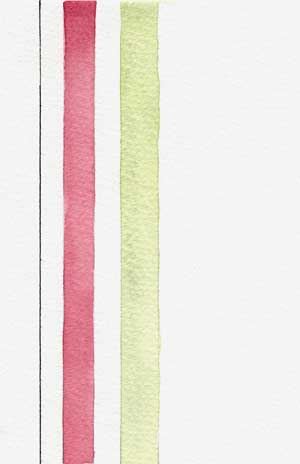The Enterprise - 2004
" An undertaking, especially one which involves courage, energy or the like; an important or daring project : a venture."
Webster’s Dictionary
Welcome to my second exhibition. I am enormously grateful to Mr Speaker, the Dean and Chapter of Westminster, and all my Colleagues for giving me this opportunity and for encouraging me to paint. David Hockney recently quoted an ancient Chinese saying: a work of art needs three things: the hand, the eye and the heart. I hope I have managed to bring these three together and that you will be able to enter into a relationship with at least some of my paintings.

© Robert Wright
Mark Rothko often said that a painting lives by companionship and I think that is a very perceptive remark. I would like to know what you think when you have viewed them. As I have started, I might as well continue with the name-dropping and say that Archbishop Rowan Williams has written that good art "works to make present an aesthetic object that allows itself to be contemplated from perspectives ... other than those of the artist's own subjectivity."
During my Sabbatical I tried to explore contemplative prayer and abstract painting. In setting out to do this I realised that not everyone is called to contemplative prayer and neither does everyone appreciate abstract painting. However, I do not think that is reason for us not trying to communicate and I really do hope that my painting will encourage people in their own exploration of God. My own exploration comes out of the writings of the anonymous author of the 14th Century Cloud of Unknowing. The Cloud calls for intense contemplation, motivated by love and stripped of all thought, as the way to the Divine. But not everyone is called to mysticism (I wouldn't even claim this vocation for myself: I wander in the foothills). However I do hope that the paintings will help the viewer enter the heart of the mystical experience themselves and that the exhibition will allow us all to open ourselves to God's gracious presence because contemplative prayer is not a personal possession that one treasures for oneself: if it is genuine, it displays the essential quality of "goodness": that is, it wishes to share the blessing with others. And I hope that this little enterprise will encourage all who visit it to open their inner door to God and perhaps, for a while, be free for God.
It has been said (by David Carbone) that "painters naturally live by seeing; painting is a way of knowing what one feels, what really matters". As Mark Rothko said in a letter to the writer Selden Rodman in 1957, "The people who weep before my paintings are having the same religious experience I had when I painted them". I don't suppose that my paintings will make you cry, but part of the excitement for me is that we shall all bring our own experiences to this encounter/ trialogue between the painter, the viewer and our Creator. Whatever my intentions were in painting each painting, the viewer will bring their own experiences 'to the party' and the painting will come alive in the present, changed somewhat by the circumstances and perceptions of those who view the paintings. The uncertainty principle in modern Quantum Physics maintains that we cannot know precisely what is happening to matter in the sub-atomic world precisely because we influence what is happening by our observation - we are part of what we see. As Thomas Merton noted in his journal: "This leads to a fabulous new concept in nature with ourselves in the midst of it, destroying the simple illusion of ourselves as detached and infallible observers." What an exciting encounter this promises, then! And perhaps, in the mixed metaphor of a writer in the Middle Ages, "you will swim with elephants and paddle with lambs!"
These paintings attempt to appeal to something in our experience that lies beyond words, perhaps allowing/inviting us to see that there are things in our experience that words cannot encompass. One of the experiences that helped me prepare for this sabbatical was a remarkable lecture given at Westminster School by Dr. Semir Zeki, Professor of Neurobiology at London University. In one of his books he quotes Nuam Gabo, "More often than not, (people) expect painting to speak to them in terms other than visual, preferably in words, whereas when a painting needs to be supplemented and explained by words it means that it has not fulfilled its function or that the public is deprived of vision." [N Gabo Of Divers Arts 1959 & S Zeki Inner Vision 1999]. Discussing the function of the brain and art, Dr. Zeki says that our visual skills have long been honed to recognise "unspeakable beauty" in an instant, whereas language, a comparatively recent evolutionary skill, has not yet developed the speed and efficiency of the visual system's capacity to grasp essentials.
But enough of words! ... these halting but highly suggestive paintings are offered in the hope that those who look at them will find perceptions which are provocative, interesting, enjoyable, transfiguring, redemptive and energising.
